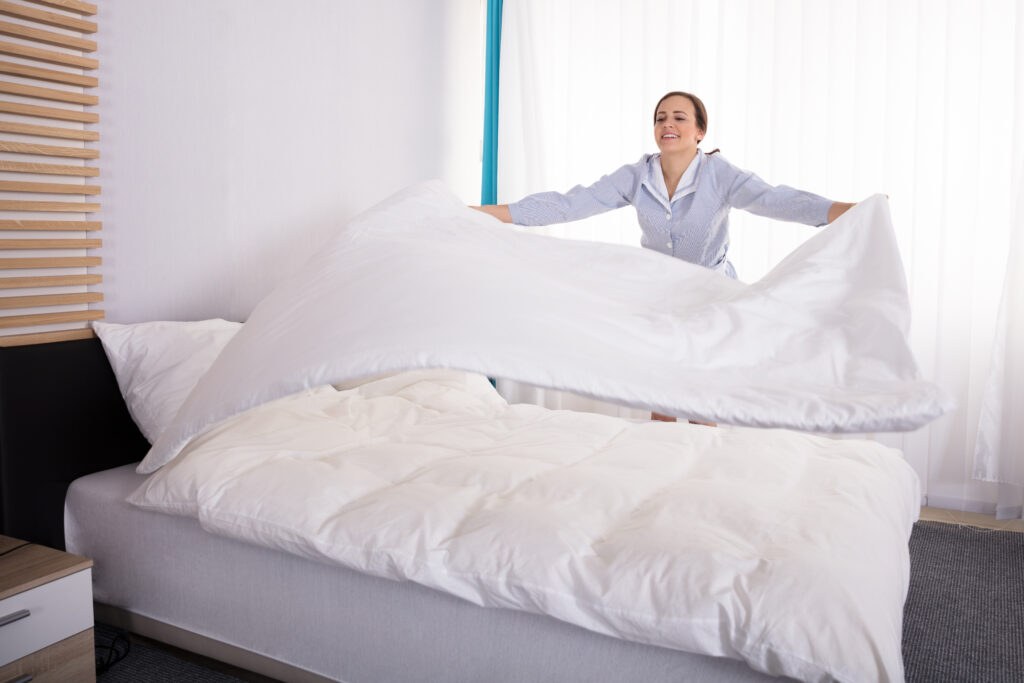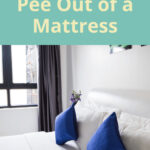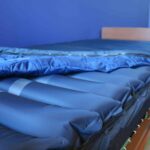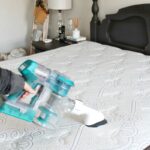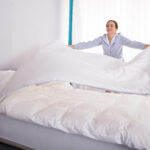Accidents happen, and when they do, it can be a challenge to know how to clean up the mess quickly and effectively. If you’ve ever had a glass of milk spill onto your mattress, then you know just how difficult it can be to get the milk out of the mattress. Fortunately, with the right steps and cleaning materials, you can get the milk out of your mattress and have it looking and smelling like new. In this article, we’ll provide you with a step-by-step guide on how to get milk out of mattress and how to clean up the mess quickly.
Materials Needed
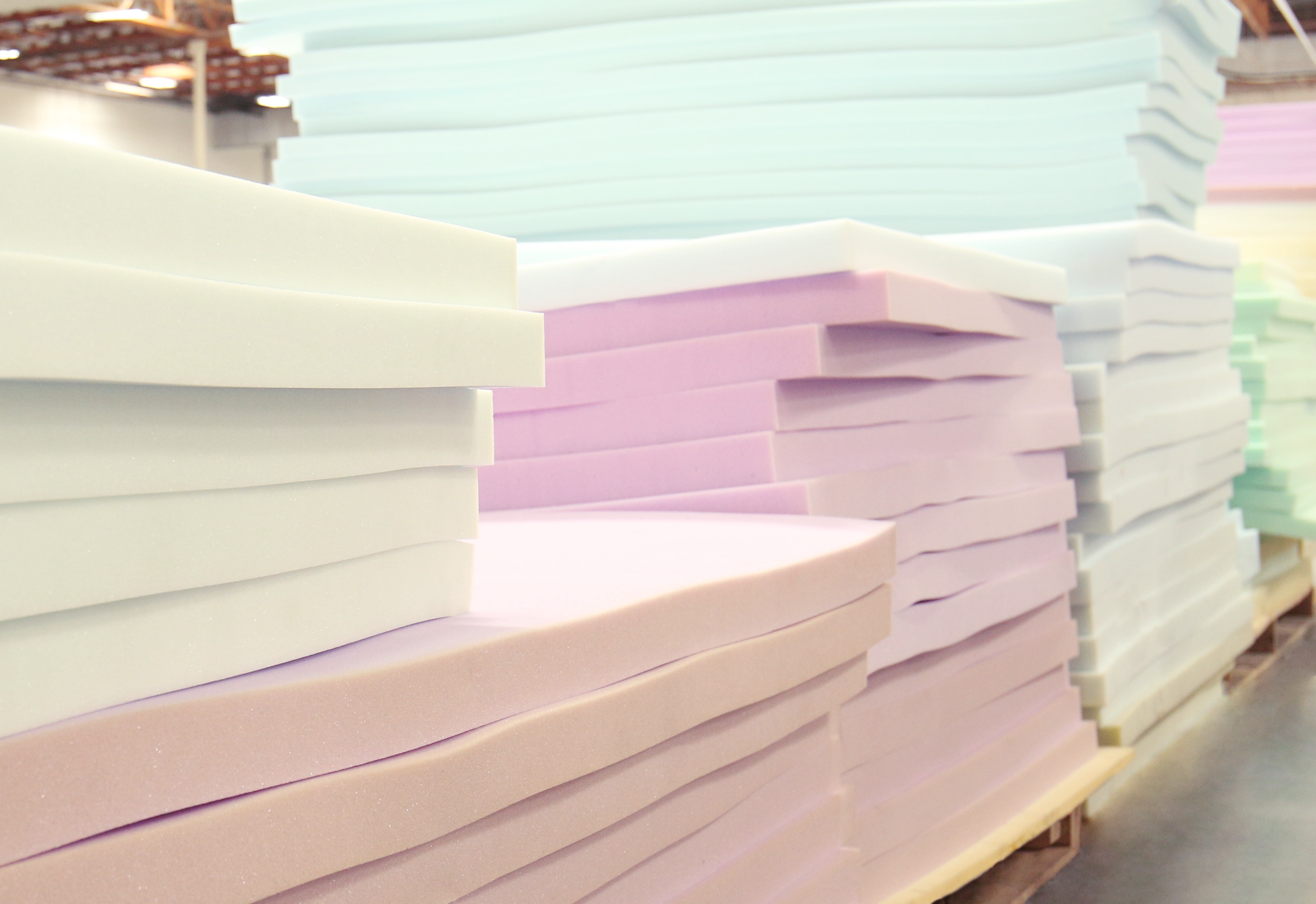
- Absorbent paper towels or cloths
- Vacuum with attachments
- Enzyme-based cleaner, such as those used for pet stains
- Baking soda
- White vinegar
- Cleaning brush or scrubbing pad
When cleaning up spilled milk on a mattress, it is important to have the right materials on hand. It is best to start the process right away to prevent the milk from drying and becoming more difficult to remove. The following materials are necessary for how to clean dried milk out of mattress.
Step 1: Blot and Remove Excess Milk
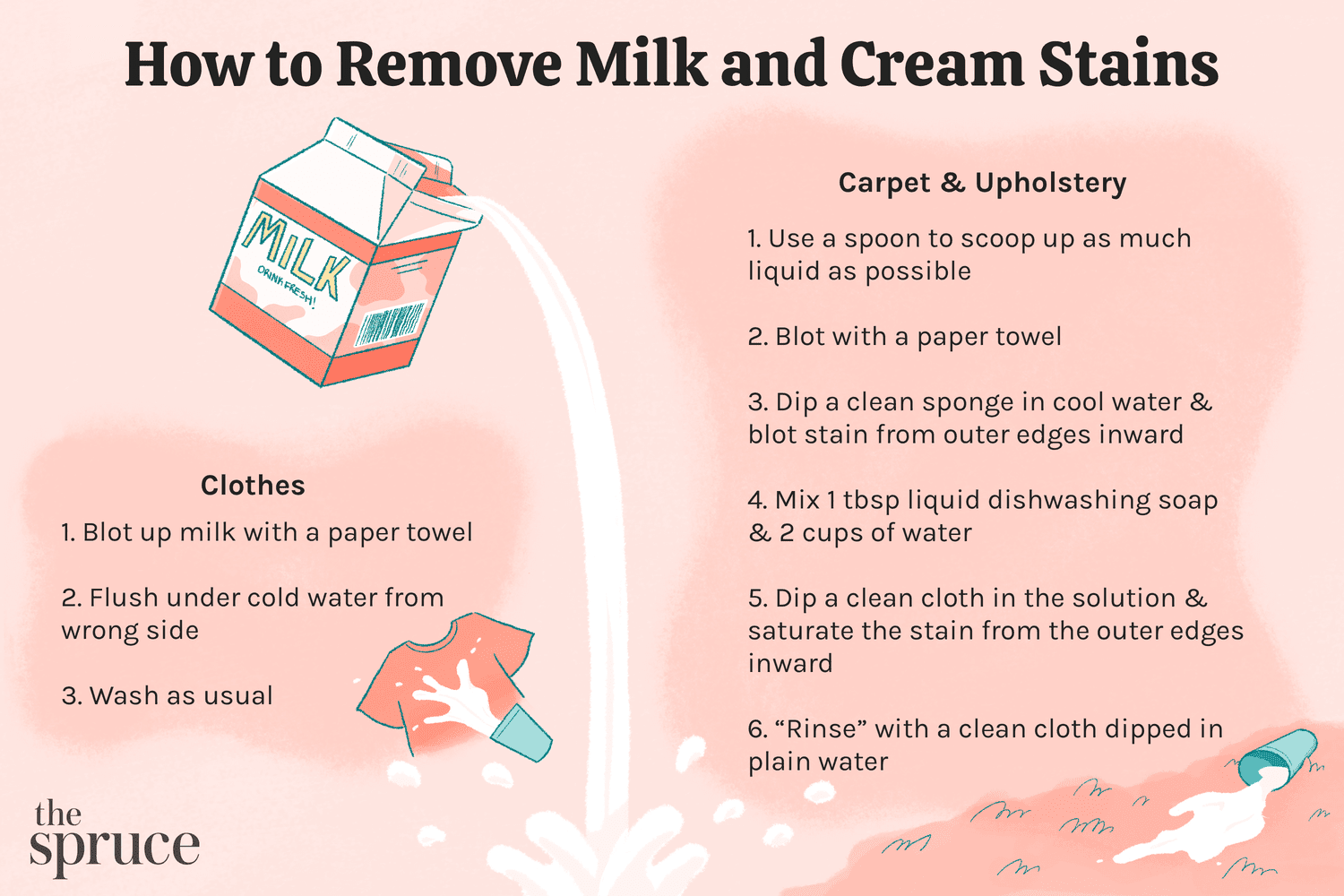
- Using a paper towel or clean cloth, blot up and absorb as much of the spilled milk as possible.
- Do not rub the area and avoid creating a larger mess.
- If there are large chunks of solid milk, use a spoon to carefully remove them.
- Continue blotting until no more milk can be absorbed.
Step 2: Apply Cleaning Solution
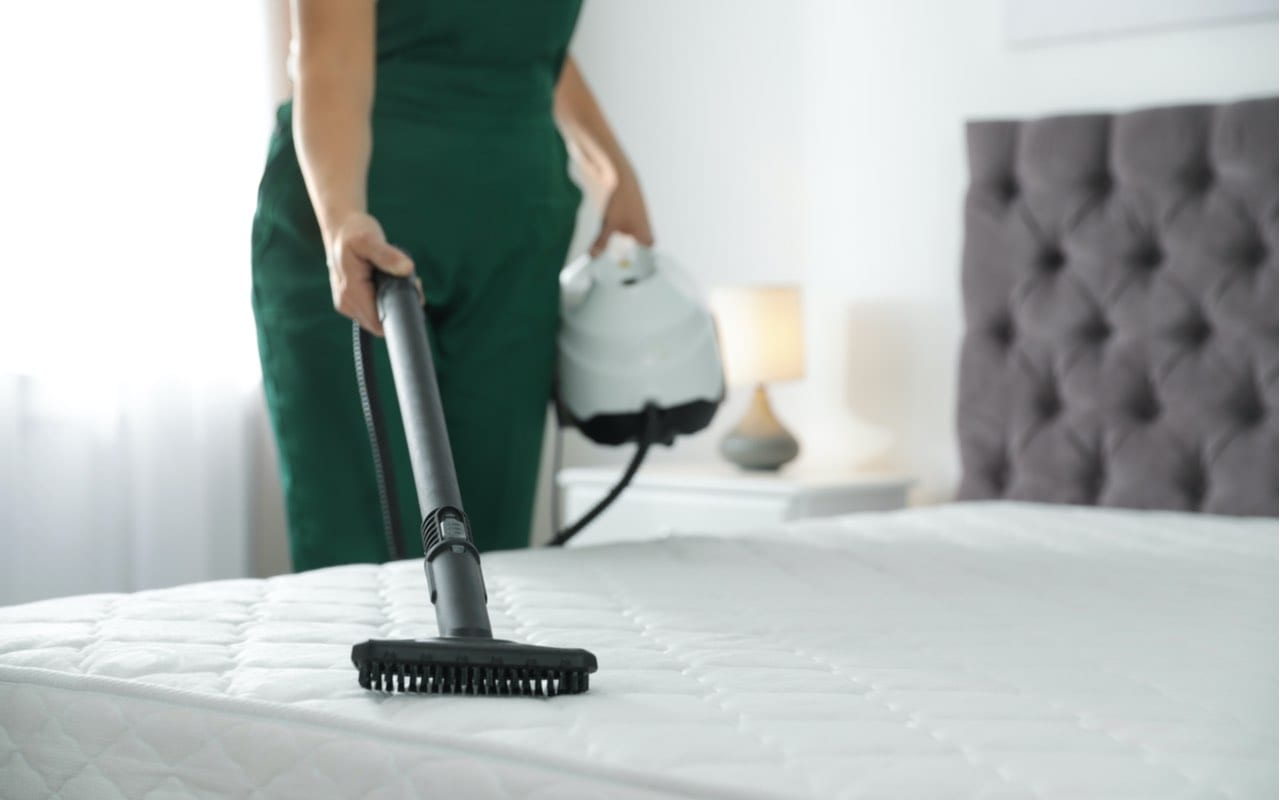
- To get the milk out of the mattress, it is important to use the right cleaning solution.
- Start by mixing one tablespoon of detergent with two cups of warm water.
- Use a soft cloth or sponge to apply the cleaning solution to the affected area.
- Gently scrub the area in a circular motion until the stain starts to lift.
- Rinse the area with a damp cloth to remove any excess cleaning solution.
Step 3: Blot with Clean Cloth

- Obtain a clean, dry cloth.
- Gently press and dab the cloth onto the surface of the mattress, beginning from the outside and working your way in.
- Do not rub or scrub the mattress.
- Continue blotting until as much of the milk as possible has been absorbed.
- Change the cloth for a clean, dry one when it becomes saturated.
Note: It is important to not use too much pressure when blotting, as this could cause the liquid to spread further and make the stain harder to remove.
Step 4: Rinse with Warm Water

- Warm water is crucial to ensure that the cleaning agent has been completely rinsed off.
- While cleaning, always use a clean white cloth to wipe off the excess liquid.
- Using warm water will help to lift any remaining residue from the mattress.
- Make sure to rinse thoroughly to ensure that all cleaning agents are removed.
- Once the mattress is dry, vacuum the mattress to remove any remaining debris.
Step 5: Vacuum
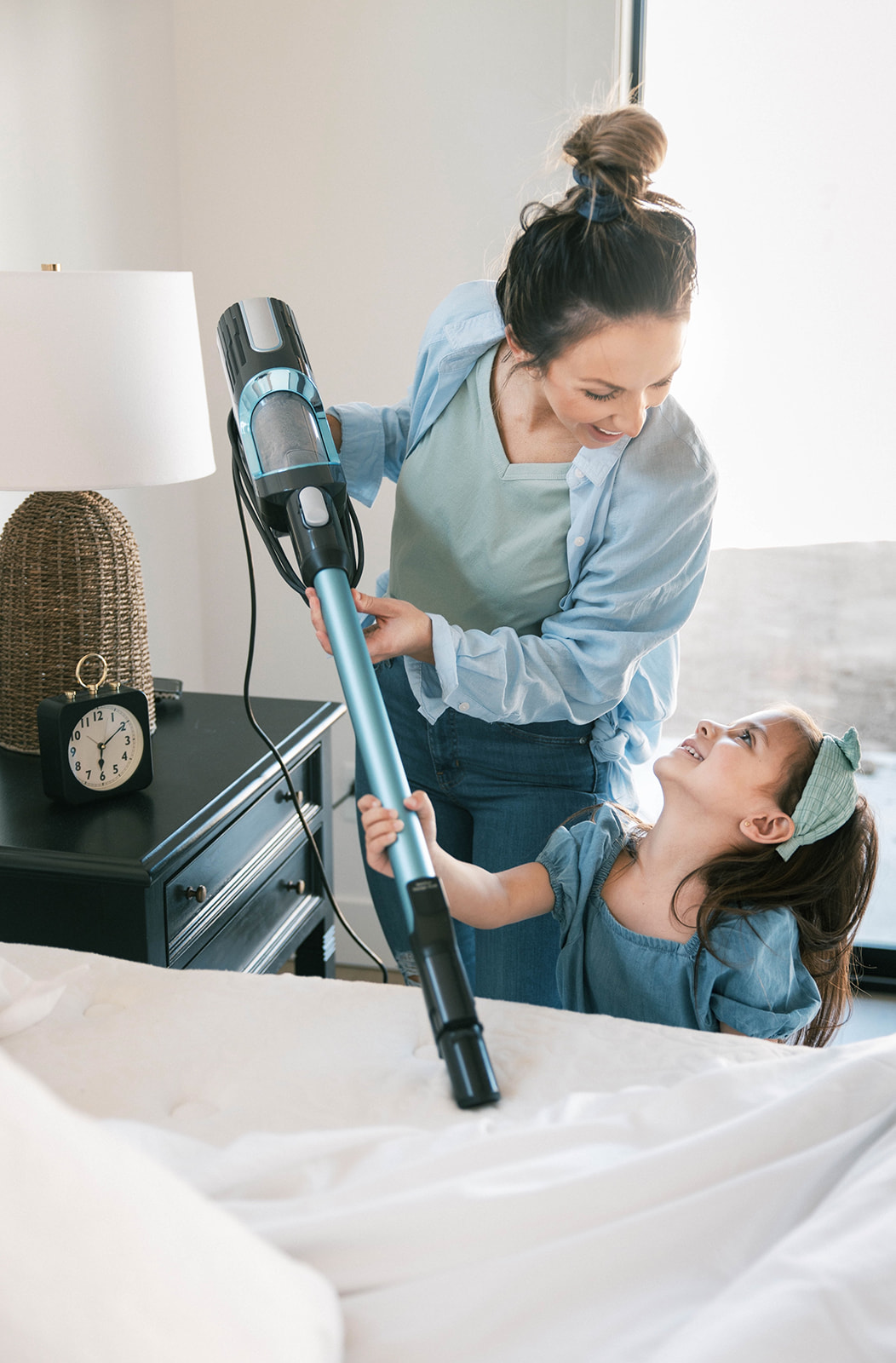
| Step | Description |
|---|---|
| Vacuum | Vacuuming the mattress will help remove any remaining milk solids from the fabric and fibers. |
Once you have completely blotted the area, use a vacuum cleaner with a brush attachment to suck up any remaining milk solids. Be sure to go over the area multiple times to ensure anything left is removed. This step is important as it will help to avoid any lingering odors or stains.
Step 6: Let Dry
- Air drying is the safest and most effective way to finish the cleaning process. This will ensure that no moisture remains in the mattress, which can create an environment for mold and bacteria to grow.
- Place a fan on the mattress and turn it on the highest setting. This will help to quickly evaporate any residual moisture left in the mattress after cleaning.
- Leave the fan on for at least 24 hours. This will help to ensure that the mattress is completely dry before being put back into use.
- Check the mattress periodically to ensure it is completely dry. If the mattress is still damp, leave the fan running until it is completely dry.
Frequently Asked Questions
What Type of Cleaning Agents Should I Use to Clean Up a Milk Spill?
Mix a solution of warm water and a mild detergent, such as dish soap. Blot the spilled milk with a clean cloth or paper towel, then apply the cleaning solution. Scrub lightly with a sponge or brush, then blot with a dry cloth. Repeat until the stain is gone, then rinse with a damp cloth. If necessary, use a spot cleaner or stain remover specifically designed for food stains.
How Quickly Should I Act to Avoid Permanent Staining?
1. Blot Immediately
-
- – The first step to take when milk spills on a mattress is to blot the area with a clean, white cloth. This will help absorb the liquid quickly and reduce the chances of the milk seeping through the mattress.
2. Use an Enzyme Cleaner – After blotting the area, use an enzyme cleaner to break down the proteins in the milk and remove any stains from the surface.
3. Rinse & Dry – Next, rinse the area with cold water and then dry it with a clean cloth. This will help remove any remaining protein residue and prevent the milk from staining the mattress.
4. Vacuum & Disinfect – Lastly, vacuum the area and then disinfect it with a mild soap solution. This will help prevent any bacteria from growing on the mattress.
Acting as quickly as possible is key to preventing permanent staining on a mattress. By taking the steps outlined above, you can help remove the milk and protect your mattress from long-term damage.
What is the Best Way to Make Sure All the Milk is Removed from the Mattress?
Blotting is the most effective way to remove the milk from the mattress. Use a clean, white cloth and press it firmly against the affected area to absorb the liquid. After blotting, rinse the cloth and repeat with a new cloth until no more liquid can be absorbed. Be sure to use a clean cloth every time to avoid spreading the liquid.
Vacuuming is also an option to remove the milk from the mattress. Use the upholstery attachment of a vacuum cleaner to gently suck up the remaining liquid. Be sure to move the vacuum in a slow, steady motion so as not to damage the mattress.
Steam Cleaning is a great way to remove any stubborn milk stains. Using a steam cleaner will help remove any remaining milk residue and will also help disinfect the area. Be sure to follow the instructions of the steam cleaner and use the correct upholstery attachment.
How Can I Avoid Further Damage If the Milk Has Already Dried?
To prevent further damage to your mattress, you should act quickly when milk spills occur. Blot up as much of the milk as you can with a clean, dry cloth, and then use a vacuum cleaner to remove any remaining moisture. If the milk has already dried, you can use a damp cloth to gently lift the dried milk off the mattress, taking care not to scrub too hard and damage the mattress fabric.
Is there a way to prevent milk stains from occurring in the future?
Yes! There are several steps you can take to prevent milk stains from occurring in the future.
- Always keep a box of baking soda on hand. Sprinkling a thin layer of baking soda on the mattress before bedtime can help absorb any moisture that may cause a stain.
- If you’re using a liquid formula when feeding your baby, be sure to keep the bottle upright and away from the mattress.
- Keep a towel or blanket nearby that can be placed on the mattress immediately after spills occur.
- Consider investing in a mattress protector. This can help to protect against any kind of liquid spills.
- Be sure to clean any spills quickly and thoroughly to minimize the stain.
By following these simple steps, you can help to minimize the risk of milk stains occurring in the future.
Conclusion
Removing milk from a mattress can be a difficult task, but it is possible with the right cleaning supplies and methods. Using a combination of baking soda, detergent, and vinegar will help to remove the milk and its odor from the mattress. Additionally, cleaning the area quickly and thoroughly is important, as this will help to reduce the amount of staining and odors that are left behind.
